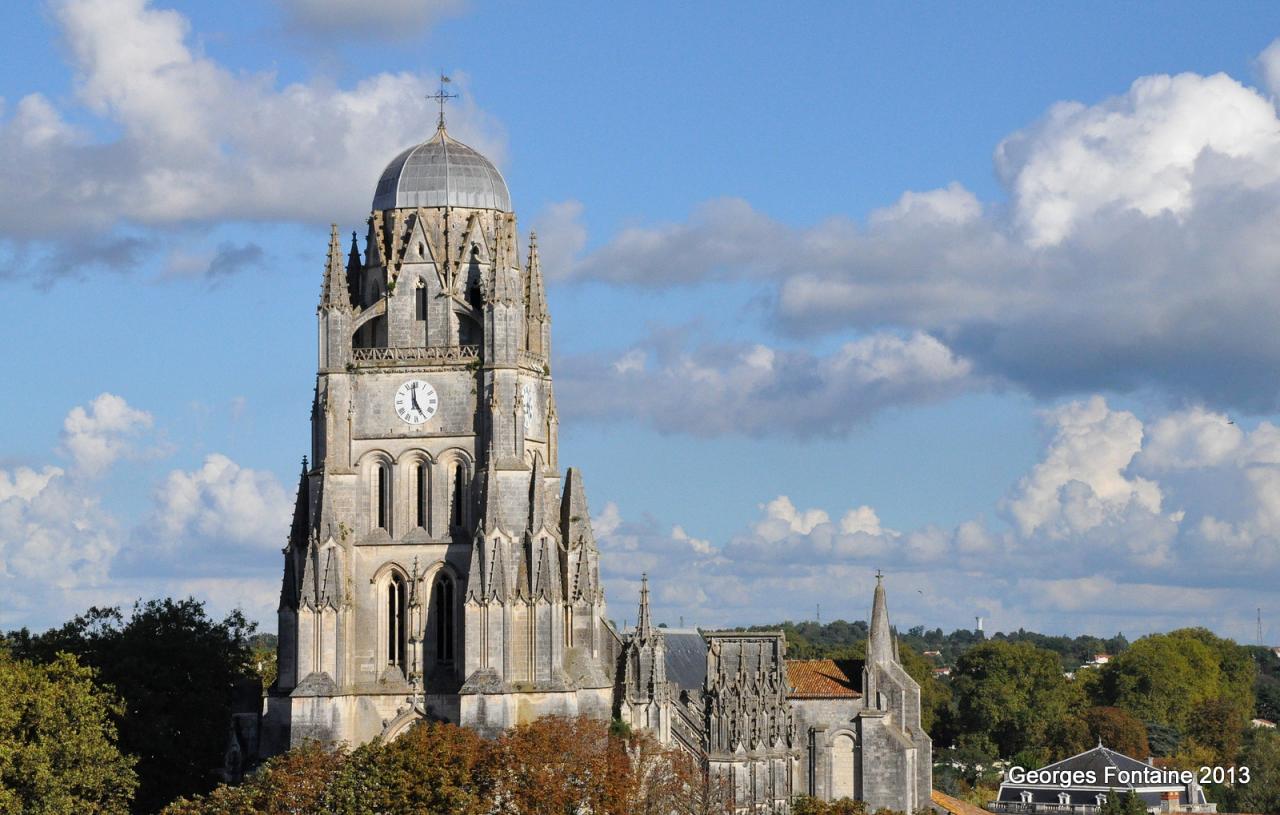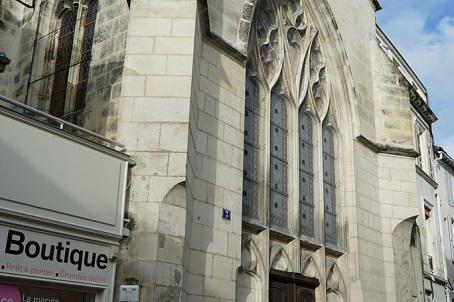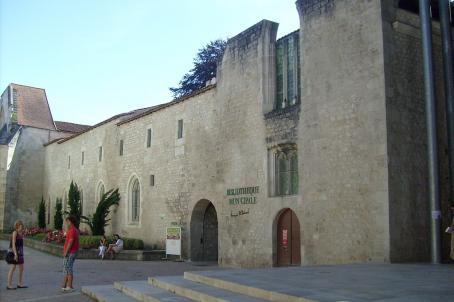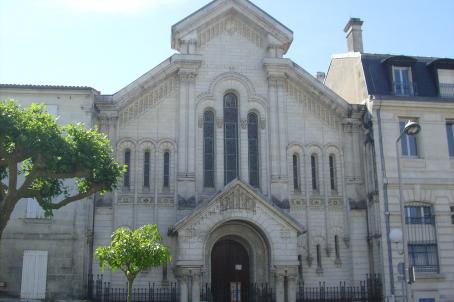Saintes Cathedral
Rebuilt after the Hundred Years' War, St. Peter's Cathedral was one of the great flamboyant Gothic monuments in the West. In 1568, when it was not completely finished, its vaults were destroyed by Protestant troops. A massive bell tower and a flamboyant portal characterize the exterior of this church, built for the most part in the 15th century. Inside, Gothic unity and simplicity of a decoration confining to skinning.
About this building
On the site of the current cathedral, nothing remains of the first Christian building, nor of that of the sixth century. In the 11th century, the monument was burned down and rebuilt in the following century, under the impetus of Bishop Pierre de Confolens or Bishop Bernard, one of his successors. Henry II Plantagenet laid siege to Saintes in 1174, damaging the church, which was probably restored after. From this time remains only the dome of the southern brace. During the 13th and 14th centuries, developments followed (chapels, sacristy, library, etc.). At the end of the Hundred Years War, the bishops of Saintes (largely from the Rochechouart family) built a large building in flamboyant Gothic. They foresaw a three-ship hall-church. The lack of funds forced the diocese to use the sale of indulgences to ensure the continuation of the project. Construction began, around 1450, by the imposing bell-tower porch (which however never received its arrow). Then the plans changed, giving way to a more traditional church with a large nave lined with two side aisles with side chapels, all counterbaked outside by flying buttresses. In 1568, the Protestants ransacked the church (whose choir was not yet finished): the vaults of the nave and aisles collapsed. The reconstruction continued throughout the seventeenth century; nevertheless, the earlier plans were abandoned: including part of the chapels of the choir; the nave, deprived of its original height, received only a wooden frame.






